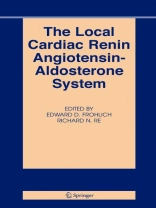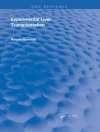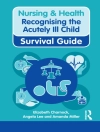How exciting it is to see a field so well established as the ren- angiotensin system continue to grow and mature. Originally, following the original identification of renin by Tigerstedt and Bergman over 100 years ago, workers in this area spent years attempting to establish its role in experimental and renal hypertension. The early work by Goldblatt, in 1934, demonstrated that the placement of a clip around a renal artery was clearly related to the subsequent development of hypertension. However, it wasn’t until the simultaneous finding by two different geographically separated teams, Page, et al, in the United States and Braun-Menendez, et al, in Argentina that the peptide angiotensin was identified. Thus, the rate-limiting enzyme renin was released from the kidney and catalyzed a biochemical cascade which was eventually shown to produce the elevated arterial pressure. Subsequently, many workers contributed to the elucidation of the concept and sequence of angiotensin I1 generation. Thus, the enzyme renin acted upon its protein substrate, produced in the liver, to liberate the decapeptide angiotensin I which, upon circulating through the pulmonary circulation, finally produced the potent octapeptide angiotensin. Several important subsequent findings demonstrated that angiotensin I1 promoted the release of the adrenal corticosteroid from that gland, thereby resulting in a larger system, the renin-angiotensin-aldosterone system. Further, this system demonstrated a classical biofeedback and the circulating octapeptide was shown to have additional biological activities in organs other than heart, vessels, kidney, adrenals, and even brain.
表中的内容
Hypertensive Heart Disease: Time for New Paradigms.- Cardiac (Pro)Renin Receptors: Functional Properties and Potential Significance.- On the Relationship Between the Renin Receptor and the Vacuolar Proton-Atpase Membrane Sector-Associated Protein (M8-9).- Role of the AT2 Receptor in Cardiovascular Function: A Brief Synopsis.- Regulation of Renin in JGA and Tubules in Hypertension.- Salt Loading: A Paradigm for a Local Cardiac Renin-Angiotensin-Aldosterone System.- Lessons from Experimental Generation of Intracellular Angiotensinogen and AII.- On the Cardiac Renin Angiotensin System: the Heart as a Source of Angiotensin II.- The Hematopoietic System: A New Niche for the Renin-Angiotensin System.- Mechanical Signaling and the Cardiac Renin-angiotensin.- Angiotensin Converting Enzyme 2: A Critical Regulator of the Renin-Angiotensin System.- Dyslipidemia and Angiotensin II and Atherogenesis.- Ace Inhibitors Directly Activate Bradykinin B1 Receptors to Release NO.- Remodeling in Hypertensive Heart Disease: Role of the Renin-Angiotensin-Aldosterone System.- Cardiac Aldosterone Production: A Vascular Problem?.- Cellular Oxidative Stress, Aging, and the Local RAS.












